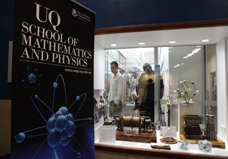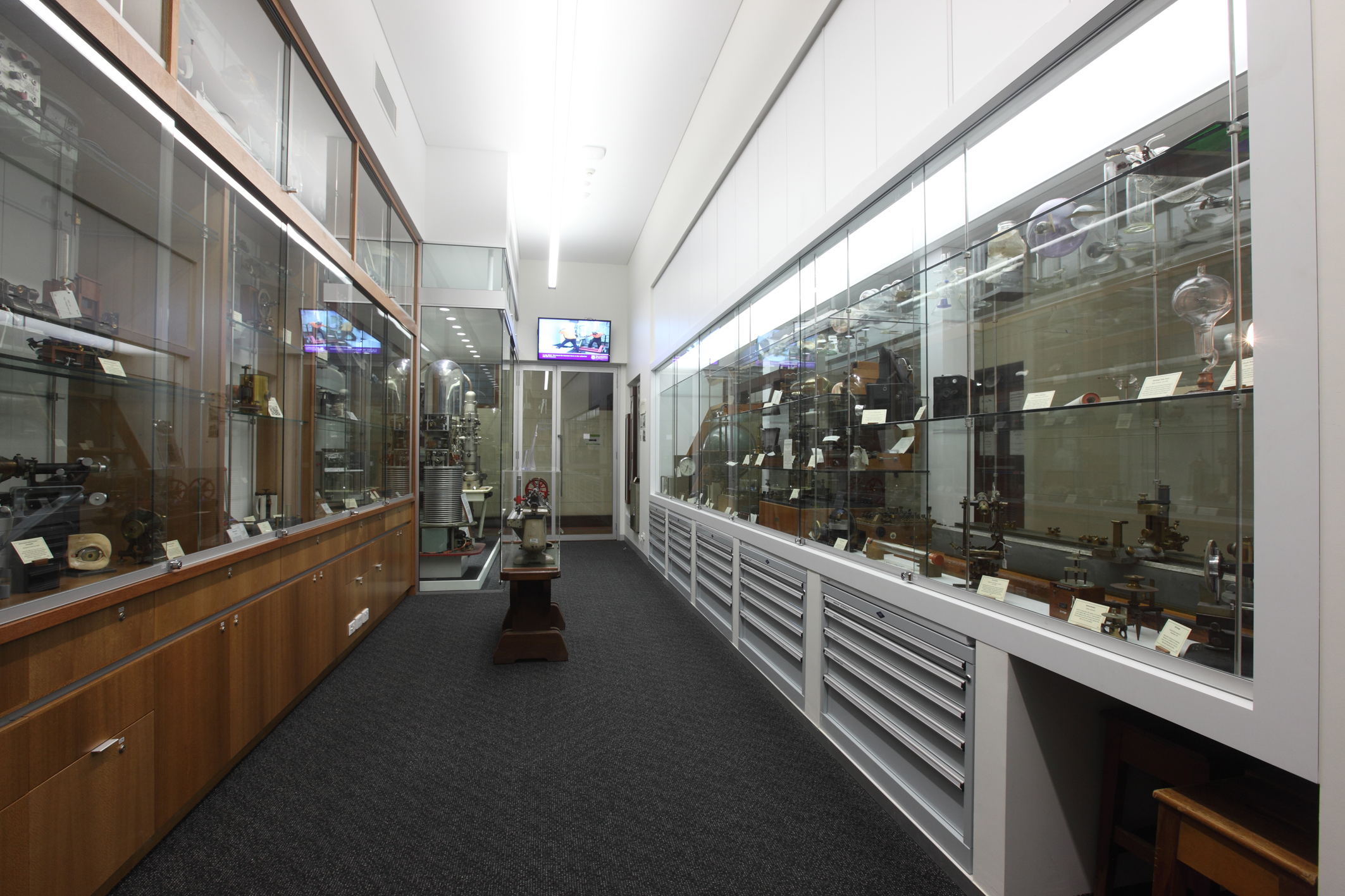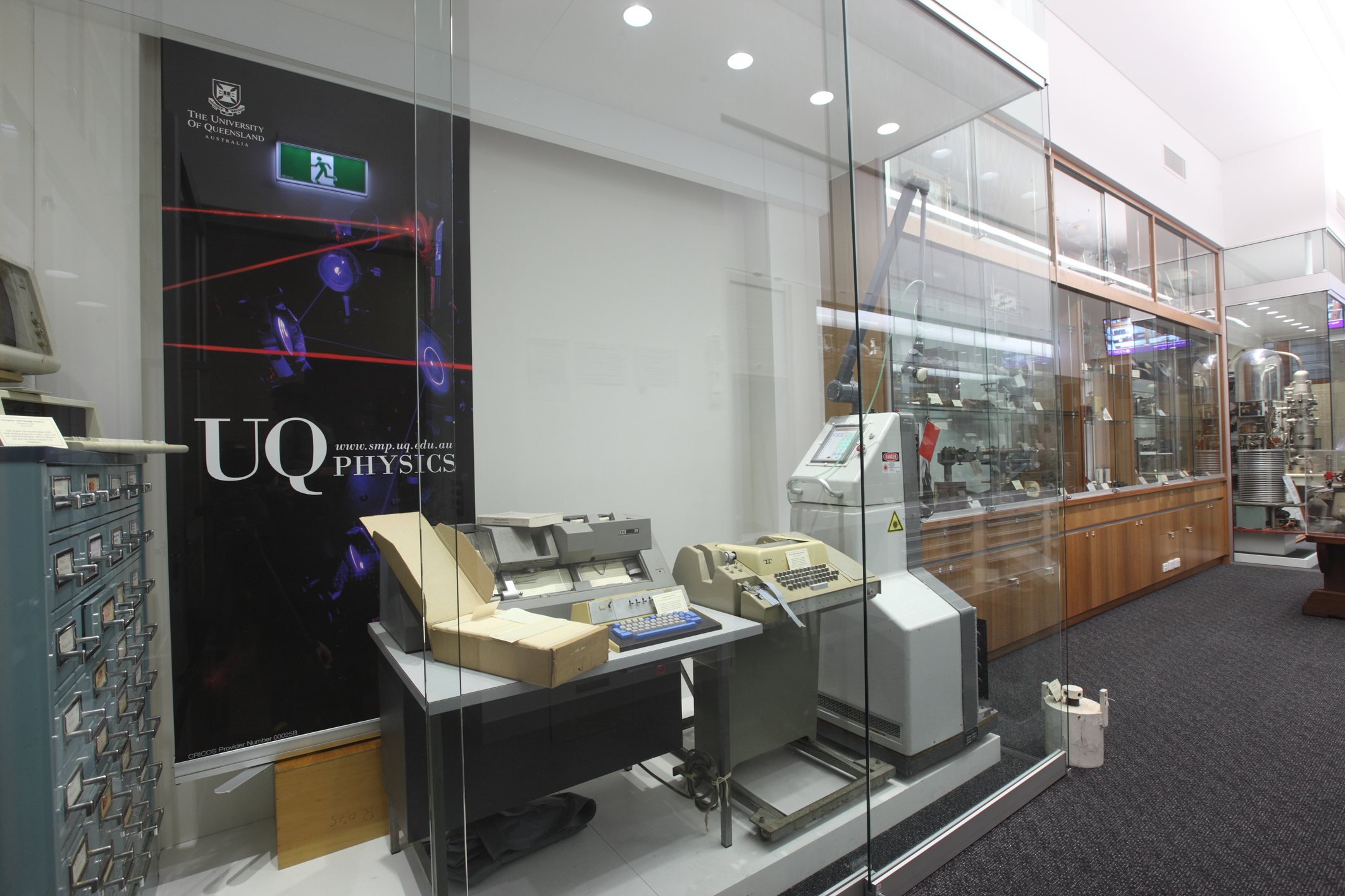Introduction
THE PHYSICS MUSEUM AT THE UNIVERSITY OF QUEENSLAND
 The Physics Department at The University of Queensland traces its origin back to the very beginning of the University with the appointment in 1911 of Thomas Parnell, M.A. (Cantab.), as lecturer. At this time The University of Queensland was situated at Gardens Point, near Parliament House and the Botanical Gardens in Brisbane, where much of QUT now is. In spite of the move to St. Lucia in 1955 , many reminders of the early days have survived (largely due to the foresight of a few individuals), to form the nucleus of the collection of instruments, books, and memorabilia which make up the Physics Museum.
The Physics Department at The University of Queensland traces its origin back to the very beginning of the University with the appointment in 1911 of Thomas Parnell, M.A. (Cantab.), as lecturer. At this time The University of Queensland was situated at Gardens Point, near Parliament House and the Botanical Gardens in Brisbane, where much of QUT now is. In spite of the move to St. Lucia in 1955 , many reminders of the early days have survived (largely due to the foresight of a few individuals), to form the nucleus of the collection of instruments, books, and memorabilia which make up the Physics Museum.
As well as the antiques with their shining brass and glowing mahogany, the collection also houses examples of more modern but equally obsolete items like spiral slide rules, a computer card punch, and sheets of computer magnetic core memory. The development of science and technology was so rapid in the last century that most students have never seen one, and many are unaware that they ever existed.
Some items are interesting because they show how things used to be done; others are just striking and instructive. A 1m diameter searchlight mirror always excites interest and after shaking hands with their own image students go away with a much better idea of the difference between real and virtual images.
Other items have political overtones. One area is devoted to Australian-made electronic instruments and devices and acts as a sort of memorial to a once flourishing industry and perhaps an indicator that we could do it again. However, most of the items on display are just instruments which are interesting because of the way they illustrate principles or because of the craftmanship in their manufacture.
One is of particular interest because of its associations. It is a Sumpner Reflecting Electrodynamometer manufactured by Robert W. Paul of London. The device is basically a moving coil galvanometer with the magnetic field provided by an electromagnet so that the instantaneous torque is proportional to the product of the two currents flowing. If one current is made proportional to the current flowing in some circuit, while the other is proportional to the voltage across it, the steady deflection will be proportional to the average power being dissipated. It was used by Thomas Parnell, who later became Professor and Dean of Science, in work described in the first research publication of the department which appeared in the Proceedings of the Physical Society of London in 1917 [1]. The paper was communicated by Prof. T.R. Lyle and discussed by Prof . Boys and, among others, Dr. Sumpner himself. A Dr. Owen pointed out that something similar had recently appeared in the Bureau of Standards bulletin (isn 't there always someone like that?) but Parnell had been enlisted in the army since 1916, so his work must have been done some time earlier. His paper showed how the Sumpner dynamometer could be used as a sort of phase sensitive detector to separate the resistive and reactive components of the impedance of an inductor under measurement.
manufactured by Robert W. Paul of London. The device is basically a moving coil galvanometer with the magnetic field provided by an electromagnet so that the instantaneous torque is proportional to the product of the two currents flowing. If one current is made proportional to the current flowing in some circuit, while the other is proportional to the voltage across it, the steady deflection will be proportional to the average power being dissipated. It was used by Thomas Parnell, who later became Professor and Dean of Science, in work described in the first research publication of the department which appeared in the Proceedings of the Physical Society of London in 1917 [1]. The paper was communicated by Prof. T.R. Lyle and discussed by Prof . Boys and, among others, Dr. Sumpner himself. A Dr. Owen pointed out that something similar had recently appeared in the Bureau of Standards bulletin (isn 't there always someone like that?) but Parnell had been enlisted in the army since 1916, so his work must have been done some time earlier. His paper showed how the Sumpner dynamometer could be used as a sort of phase sensitive detector to separate the resistive and reactive components of the impedance of an inductor under measurement.
We also try to preserve relevant books, catalogues and instruction manuals which are all too often discarded by libraries pressured for space. The Alumni Association, which organises a book fair every two years, has donated many invaluable reference books and catalogues.
 The presence of a Physics Museum inevitably attracts jibes like 'the whole place is a museum' and questions of whether such a ‘luxury’ can be afforded these days. However we feel that preservation of the items in the collection is a worthwhile endeavour, and that students benefit from studying them or even just seeing them. Indeed, the display space has recently been refurbished to make the collection more accessible to students and the public, and to allow the latest digital techniques to be used to aid interpretation. The collection is constantly expanding with more obsolete equipment as well as donations of some fine instruments and books by well-wishers. There are more displays of instruments in the basement (microscopes and optical instruments) and on Level 3 of the building where another display of calculating devices (including special purpose slide rules for estimating fall-out levels after a nuclear bomb-attack) has been mounted [2].
The presence of a Physics Museum inevitably attracts jibes like 'the whole place is a museum' and questions of whether such a ‘luxury’ can be afforded these days. However we feel that preservation of the items in the collection is a worthwhile endeavour, and that students benefit from studying them or even just seeing them. Indeed, the display space has recently been refurbished to make the collection more accessible to students and the public, and to allow the latest digital techniques to be used to aid interpretation. The collection is constantly expanding with more obsolete equipment as well as donations of some fine instruments and books by well-wishers. There are more displays of instruments in the basement (microscopes and optical instruments) and on Level 3 of the building where another display of calculating devices (including special purpose slide rules for estimating fall-out levels after a nuclear bomb-attack) has been mounted [2].
Acknowledgements
We owe special thanks to the late Ron Edgeworth and Dr. Bill Lasich for ensuring the survival of many of the items now on display. The late Andrew Noskoff and the late Dr. Rodney McDuff were responsible for first conceptualising and setting up the website, perhaps the first museum website in Australia.
References
1. T. Parnell, An Alternating Current Bridge Method of Comparing Two Fixed Inductances at Commercial Frequencies, Proc.Phys.Soc. London, XXIX, 259-268, 1917.
2. N.R. Heckenberg, Catalogue for a Display of Calculating Devices, Physics Annexe 1991, Physics Department, University of Queensland, 11 pp, 1991.
Emeritus Professor Norman Heckenberg
School of Mathematics and Physics
The University of Queensland
St. Lucia. 4072
Australia
heckenberg@physics.uq.edu.au